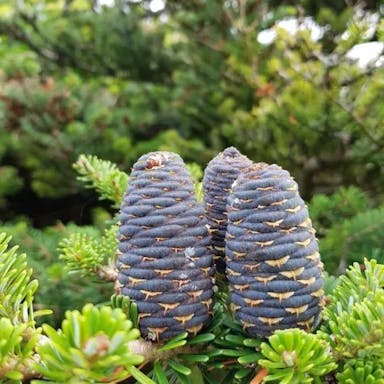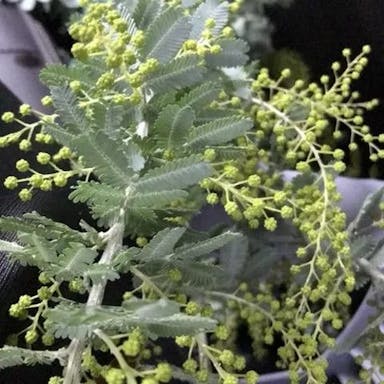Australian beefwood benefits from regular pruning to maintain its shape, promote new growth, and improve overall plant health. Pruning should be done in late winter or early spring before new growth emerges. Remove dead, damaged, or diseased branches first, followed by any crossing or rubbing branches. Avoid cutting back more than one-third of the plant at a time to prevent stress. After pruning, water the plant thoroughly and apply a balanced fertilizer to encourage recovery and new growth. Regular pruning will help Australian beefwood thrive and remain an attractive addition to your garden.
Australian beefwood
- Scientific name
- Casuarina equisetifolia
Basic Information
- Casuarinaceae Family Casuarina Genus Australian beefwood Species
- Casuarinaceae > Casuarina > Casuarina equisetifolia
- 75%
- The Completeness of This Encyclopedia
Please help us complete the encyclopedia, Terrarium is a encyclopedia service to be completed with everyone in the world. Currently, this page is 75% complete. For more information on how to contribute, please click here.
- Tree
- Height
- 6000cm ~
- Flower Color
- Leaf Color
- Anthesis
- Sunlight Exposure
Full Sun Long hours of sunlight from morning to afternoon Partial Shade A location in the shade of a tree or where either the morning or afternoon is shaded Full Shade A place where there is no direct sunlight
- Full Sun
- Hardiness Zones
This is an indicator to know to which zone each plant can winter. Knowing the zone of each plant gives you an idea of the cold temperature resistance when grown in the ground without a roof. 2: -42.7 to -40.0 3: -39.9 to -34.4 4: -34.3 to -28.9 5: -28.8 to -23.3 6: -23.2 to -17.8 7: -17.7 to -12.2 8: -12.1 to -6.7 9: -6.6 to -1.1 10: -1.0 to 4.4 11: 4.5 to 10.0
- 10
- Cold resistance
- Poor
- Heat resistance
- Excellent
- Habitat of origin
- Australia, Malaysia, Philippines
- Growth Rate
- Fast
What is Australian beefwood (Casuarina equisetifolia)?
What is Australian beefwood (Casuarina equisetifolia)
Flower meaning
Australian beefwood can be propagated through seeds, cuttings, and division. Seeds should be sown in well-draining soil, kept moist, and placed in a warm, sunny location. Cuttings can be taken from healthy stems, treated with rooting hormone, and planted in a mix of sand and peat. Division involves separating the plant into smaller sections with roots attached. To multiply using various methods, start by collecting seeds, taking cuttings, and dividing the plant. Harvest seeds when they are mature and dry, take cuttings in the spring, and divide the plant in the fall for best results.
Calendar of Australian beefwood (Casuarina equisetifolia)
Calendar
Australian beefwood thrives in full sun exposure, requiring at least 6-8 hours of direct sunlight daily. It exhibits excellent heat tolerance, preferring temperatures between 65-85°F (18-29°C). Cold tolerance is limited, with temperatures below 50°F (10°C) potentially causing damage. During winter, it is advisable to bring the plant indoors or provide protection from frost. Australian beefwood should be placed in a location with ample sunlight and well-draining soil. It is essential to avoid overwatering, as this can lead to root rot. Regular watering during the growing season and reduced watering in winter are recommended. This plant's strength lies in its ability to thrive in bright sunlight, making it ideal for sunny locations.
How to grow Australian beefwood (Casuarina equisetifolia)
Watering
Australian beefwood is susceptible to various pests and diseases, including scale insects, spider mites, and root rot caused by Phytophthora. These pests and diseases can weaken the plant, leading to leaf discoloration, wilting, and stunted growth. Scale insects can be controlled by pruning affected areas and applying horticultural oil, while spider mites can be managed by increasing humidity and using insecticidal soap. Root rot prevention involves ensuring well-draining soil and avoiding overwatering. The withering of Australian beefwood can be attributed to the damage caused by these pests and diseases, which disrupt the plant's ability to absorb nutrients and water effectively. Regular monitoring and prompt treatment are essential to maintain the health of Australian beefwood plants.
Soil and Fertilizer
Australian beefwood is available in two main varieties: one with red flowers and the other with yellow flowers. When selecting seedlings, choose those with healthy green leaves and sturdy stems. Ensure the roots are well-developed and not root-bound. For seeds, opt for those that are plump, firm, and free from mold or damage. Look for seeds that are specific to the variety you desire. When purchasing seedlings, check for any signs of pests or diseases. It is essential to select varieties that suit your climate and soil conditions for successful growth. Ensure the seedlings or seeds are sourced from reputable suppliers to guarantee quality and authenticity. Conduct thorough research on the specific requirements of each variety to ensure proper care and maintenance.
Sunlight and Place
Australian beefwood typically blooms in the United States during the spring and summer months. The flowers are at their best in late spring to early summer. Blooming usually occurs once a year, lasting for several weeks. The plant requires a period of warm weather to initiate flowering. To make the flowers bloom longer, ensure the plant receives adequate sunlight and water. Pruning dead flowers can also encourage new blooms. Additionally, using a balanced fertilizer can promote healthy flowering. Regularly inspecting the plant for pests and diseases can help maintain its blooming period.
Advanced Information of Australian beefwood (Casuarina equisetifolia)
Pruning
NO DATA
Planting and Harvest
Australian beefwood, also known as Casuarina equisetifolia, is a fast-growing evergreen tree native to Southeast Asia and Australia. It belongs to the Casuarinaceae family and is characterized by its slender, jointed stems resembling pine needles, hence the nickname "she-oak." The tree produces small, inconspicuous flowers that are typically red or brown in color. Casuarina equisetifolia is commonly used for coastal landscaping due to its tolerance to salt spray and sandy soils. It can reach heights of up to 100 feet, making it an ideal choice for windbreaks and erosion control. The tree also bears small, woody fruit cones that contain tiny seeds. This species is relatively easy to grow and requires minimal maintenance once established. Its unique appearance and adaptability make it a popular choice for ornamental purposes in tropical and subtropical regions.
Propagation
The flower language commonly used in America for the Australian beefwood plant is: - Strength - Resilience - Endurance One typical example is "Strength," symbolizing the ability to withstand challenges and difficulties. This reflects the Australian beefwood's robust nature and ability to thrive in harsh conditions. Birth flowers are specified by month and date only.
Pests and Diseases
For Australian beefwood, watering frequency should be moderate, typically every 7-10 days during the growing season. This plant prefers well-draining soil to prevent waterlogging, which can lead to root rot. During the dormant season, reduce watering to every 2-3 weeks to mimic its natural environment. Check soil humidity by inserting a finger 1-2 inches deep; if it feels dry, it's time to water. Water thoroughly until it drains from the bottom of the pot, ensuring the entire root system receives moisture.
Habitat of Australian beefwood (Casuarina equisetifolia)
Habitat
Toxicity of Australian beefwood (Casuarina equisetifolia)
Health Benefits
- edible
- Inedible
- Toxic
- No toxicity
NO DATA
Toxic for dogs and cats
NO DATA
Q&A of Australian beefwood (Casuarina equisetifolia)
- Is there a recommended way to choose Australian beefwood?
Australian beefwood thrives in well-drained sandy soils with a pH range of 6.0 to 7.5. It requires a balanced fertilizer with a ratio of 10-10-10 or 20-20-20 to promote healthy growth. Fertilizer should be applied in early spring before new growth begins, and again in mid-summer to support flowering and fruiting. Avoid fertilizing in late fall or winter to prevent stimulating new growth that may be damaged by frost. Apply fertilizer evenly around the drip line of the plant, following the manufacturer's instructions for the appropriate amount based on the size and age of the Australian beefwood. Regularly check the soil quality to ensure proper drainage and aeration for optimal nutrient uptake.
0
0












